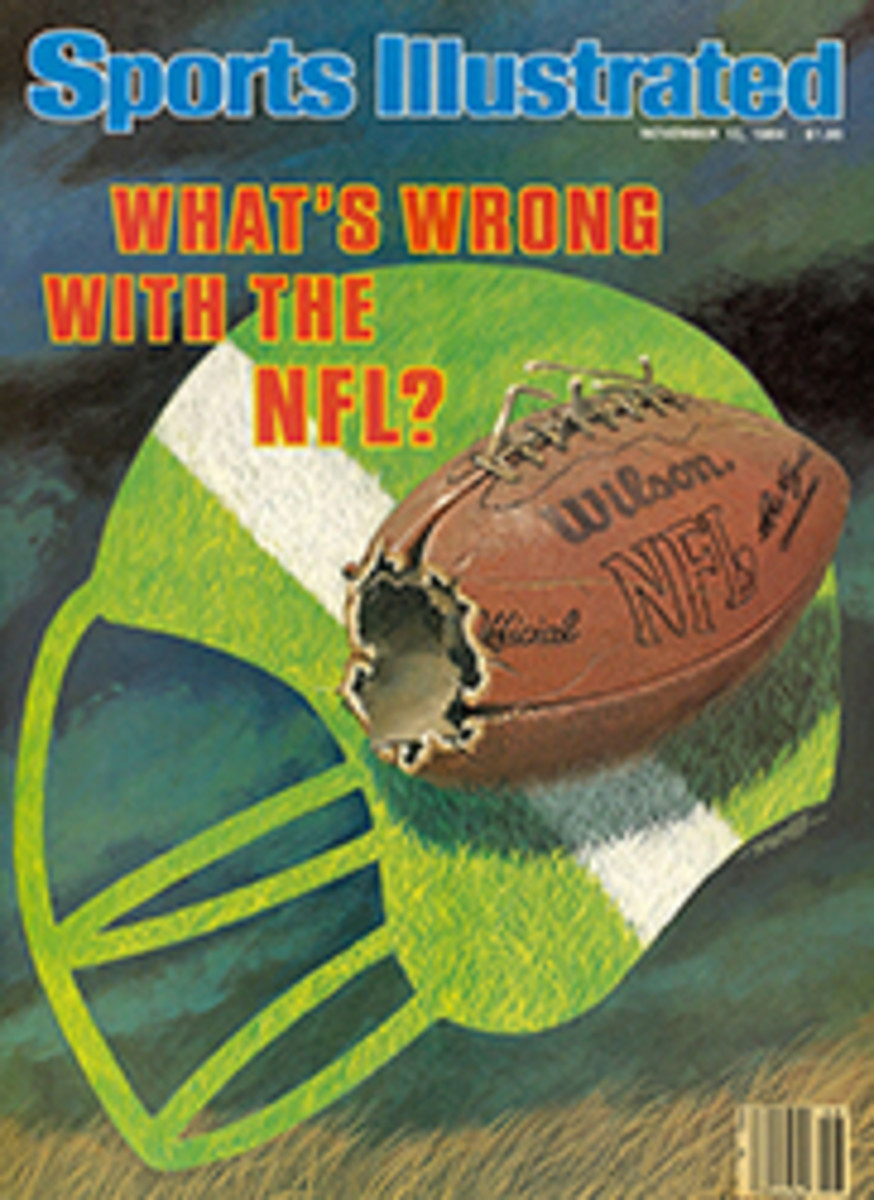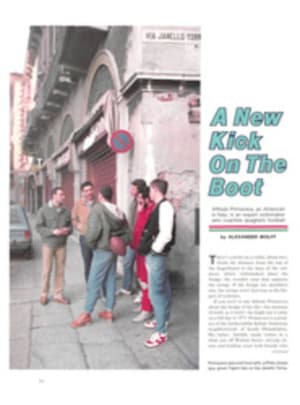
WHENCE CAME THE WAVE? COLORADO HOCKEY OR FOOTBALL IN WASHINGTON?
Spectator sports are drowning in The Wave. It is transforming stadiums into beach-front properties with such regularity these days that some people wish it would just go back out to sea.
There's the Tiger Wave, the Seahawk Wave, the Viking Wave. What's next? The Fuzzy Zoeller Wave? The University of Michigan even has a shush wave. Last season, against Northwestern, The Wave's thundering cost the Wolverines a five-yard delay of game penalty because they couldn't hear the signals. In a later game against Purdue, coach Bo Schembechler gestured for the stands to knock it off. So fans replaced the yells with a "Ssshh!" In some stadiums the fans will start one wave chasing after another, or the upper deck will wave in the opposite direction from the lower deck. It's enough to make a person seasick.
Who started it all? On national television Dick Enberg of NBC said Michigan was the instigator. Not true. Michigan lifted the idea from the University of Washington, which in turn credits Robb Weller, an alumnus from the class of '72 and now co-host of Entertainment Tonight, with inventing it. But the Weller Wave Theory doesn't wash with Krazy George, a.k.a. George Henderson, one of those cheerleader-for-hire types. Henderson, who hails from Capitola, Calif., swears that he started The Wave. "And anyone who says I didn't," Henderson says, "is a stinkin' liar."
Weller dates his wave to Oct. 31, 1981, when the Huskies played a football game with visiting Stanford. Weller, who had been Washington's yell king in '71, was asked back to teach the crowd some of the cheers from his era. "By the third quarter the game was still tight, but we led by two points," Weller says. "The crowd was excited, and I took advantage of the situation."
From his repertoire he chose the Expanding Cheer, a kind of waterfall in reverse. It involves only one section, and the fans wave from the bottom row to the top. "They loved it," says Bill Bissel, the band director. "I told Robb to keep going, to try it sideways or something."
Which Weller did, though he expected it to ebb and die when it reached the end of the student section. It didn't. "Thank those stodgy old alums in Section 23," he says. "They picked up on it, and the wave went all the way around—two or three times. I know what Moses must have felt like when he parted the Red Sea." And Moses didn't even beat Stanford 42-31.
Henderson dates his wave to the American League playoffs in Oakland on Oct. 15, 1981, or two weeks before Weller's wave. It was the sixth inning of the third game, and the Yankees led the A's 1-0 and the series 2-0. "Even before I arrived at the stadium that day," says Henderson, "I knew something special was going to take place." There was an emotional undercurrent, if you will.
Henderson's wave prototype was something he'd done at Colorado Rockies hockey games. He would get three sections into it, with the first section screaming "Go," the second "Rockies" and the third "Go." "Go Rockies, go!" When more than six sections were involved, it usually fell apart.
But that was hockey. These were the playoffs, and even though the A's were losing, the fans were pumped. Henderson told them, "When I point to you, stand, scream, then sit down." He started with three sections. Eventually the entire stadium swelled to the occasion. "When it hit the end of that first lap," says Henderson, "everyone stood and applauded." But the A's still lost 4-0. Those are the breakers.
"From the footage I've seen," says Weller, "that wave in Oakland wasn't a wave at all." Weller points out that Henderson's wave was stiff and regimented. In fact, Weller says, the Huskies have been doing Henderson's alleged wave for years, but they called it the Attitude Check.
"Let's get this straight," Henderson says. "Mine was a wave, pure and simple. They copied mine. Are you trying to tell me that they don't have television sets up in Seattle? My wave was on national TV in three separate innings. They're a bunch of turkeys."
"Look," Weller says. "We don't care if everyone in the world does it. We don't even care if everyone in the world takes credit for it. We know the moment it happened. It just happened. And Bissel and I were the catalysts."
Well, everyone's en-tidal-ed to his opinion.

